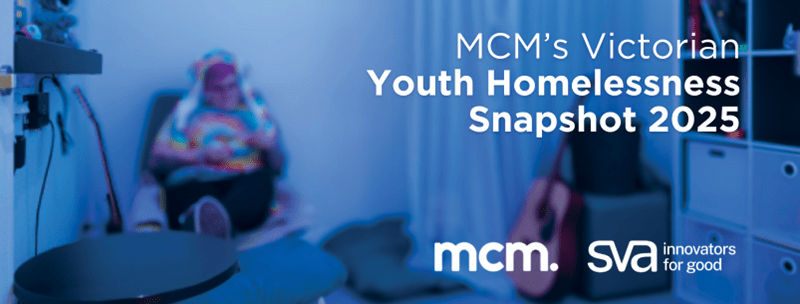- About
- Services
- Advocacy
- Support us
- News
- Publications
- Careers
- Contact
 4 August 2025
4 August 2025
Melbourne City Mission (MCM), in partnership with Social Ventures Australia (SVA), has today released the 2025 Victorian Youth Homelessness Snapshot, painting a stark picture of the deep and intersecting challenges faced by young people experiencing homelessness in Victoria.
Launched at Parliament House by the Hon Harriet Shing, Minister for Housing, alongside Quantum Support Services, Associate Professor Jess Heerde (The University of Melbourne and The Centre for Adolescent Health at the Royal Children's Hospital), and youth advocates with lived experience, this second edition of the annual Snapshot builds on the 2024 baseline to track trends and inform action.
The Snapshot captures the circumstances of 15–24-year-olds who accessed MCM’s homelessness programs in Victoria on 8th April 2025. Programs include Frontyard Youth Services, youth refuges, crisis accommodation, intensive case management programs, foyers, and specific refuges and crisis services for young women.
The 2025 Snapshot confirms the urgent and growing need for early intervention, housing, and wraparound support.
This year’s data reveals a troubling ongoing crisis, showing that despite growing awareness, the challenges faced by young people remains unresolved. High rates of family violence, long-term homelessness and mental health distress continue to characterise the experiences of this group.
Findings, like the 4 in 5 young people who experienced family violence before becoming homeless, have remained alarmingly consistent since the 2024 Snapshot. Continued risks apply with 2 in 3 young people reporting self-harm, suicidal ideation or suicide attempts. Health emergencies also remain high, with 1 in 2 having attended a hospital emergency department for mental health concerns, and 1 in 4 young people living with chronic pain.
Intersectionality data continues to point towards compounding disadvantage and systemic inequality, with disproportionate numbers of First Nations youth, those identifying as LGBTIQA+, people from regional or rural areas, and young people born outside Australia.
Social disconnection is another growing concern. For the first time, the Snapshot measured education and employment participation, finding that 2 in 3 young people were not engaged in study or work. This is a strong indicator of long-term marginalisation and lost opportunity.
Persistent homelessness continues to be a defining feature. The data shows 1 in 4 have been homeless for four years or more, with 1 in 3 first becoming homeless aged 16 or younger, consistent with last year.
The data confirms that young people experiencing homelessness are navigating a system that is fragmented and reactive, not proactive or preventive. Issues of family violence, mental health, education, and housing instability cannot be solved in isolation. The Snapshot shows us that a more coordinated, cross-system response is essential.
With an alarming number of unaccompanied children and young people seeking help from homelessness services in Victoria in the past year, the evidence is clear: services alone cannot shoulder this burden. The 2025 Snapshot underpins the need urgent investment and reform across homelessness, housing, health, child protection and family violence systems.